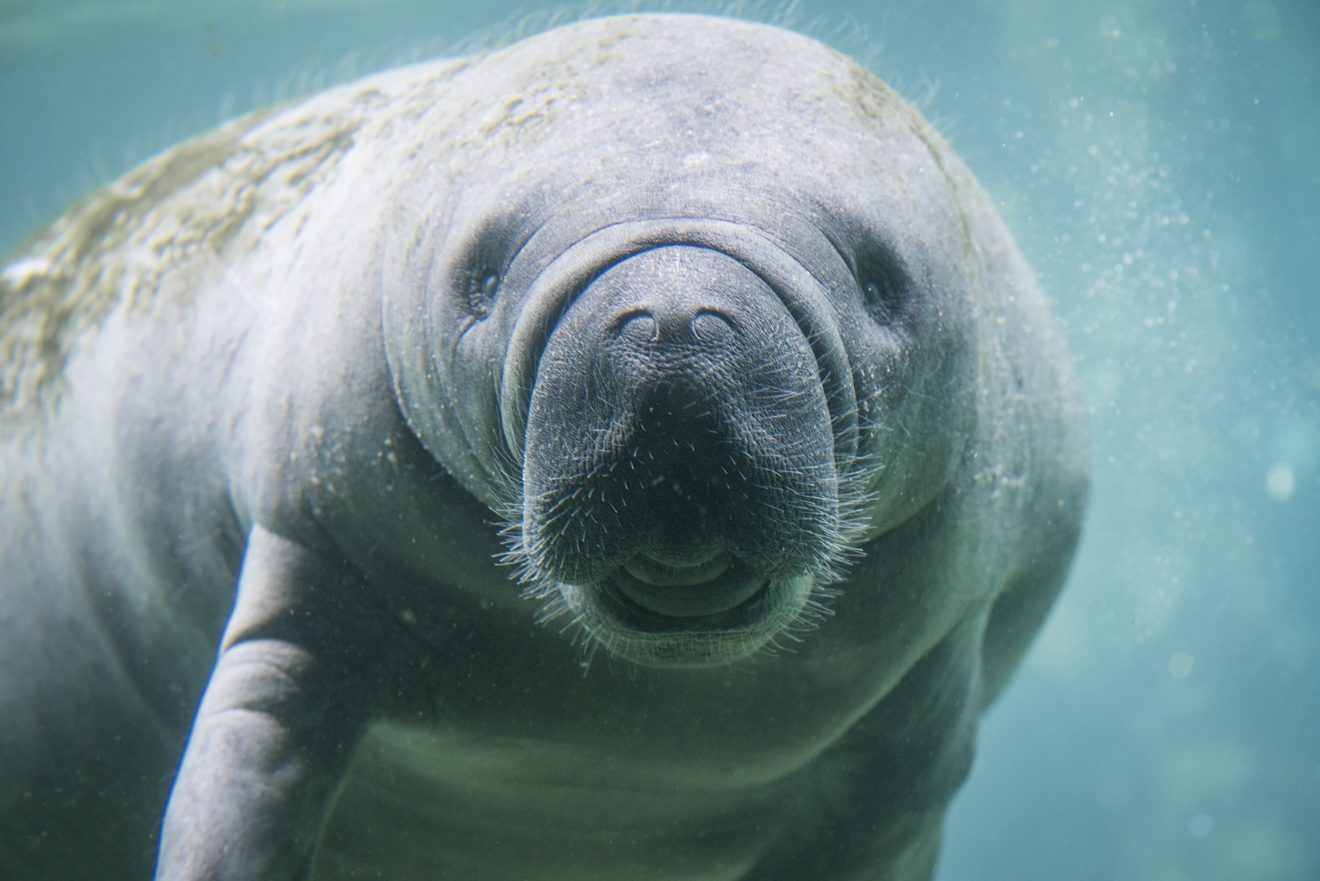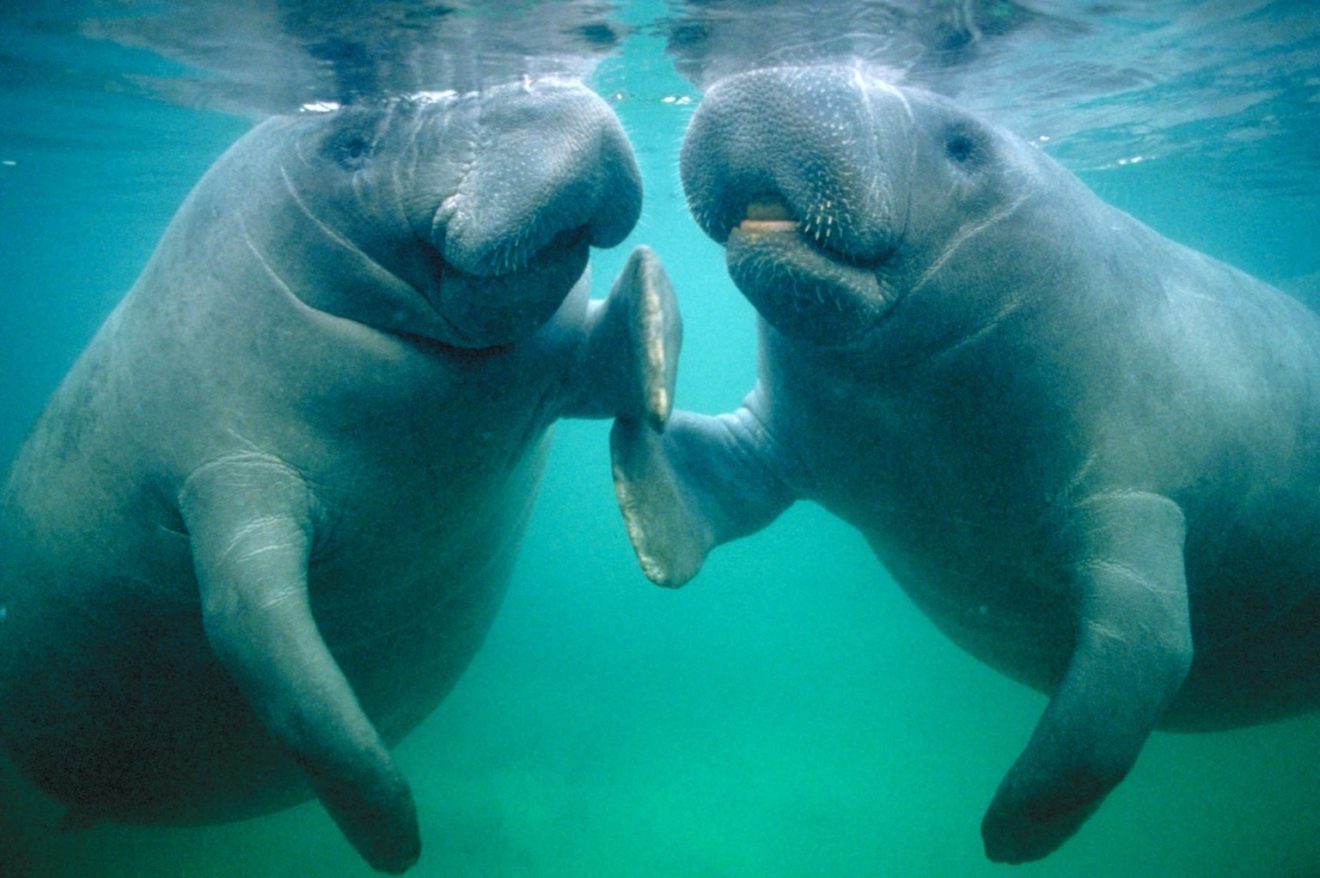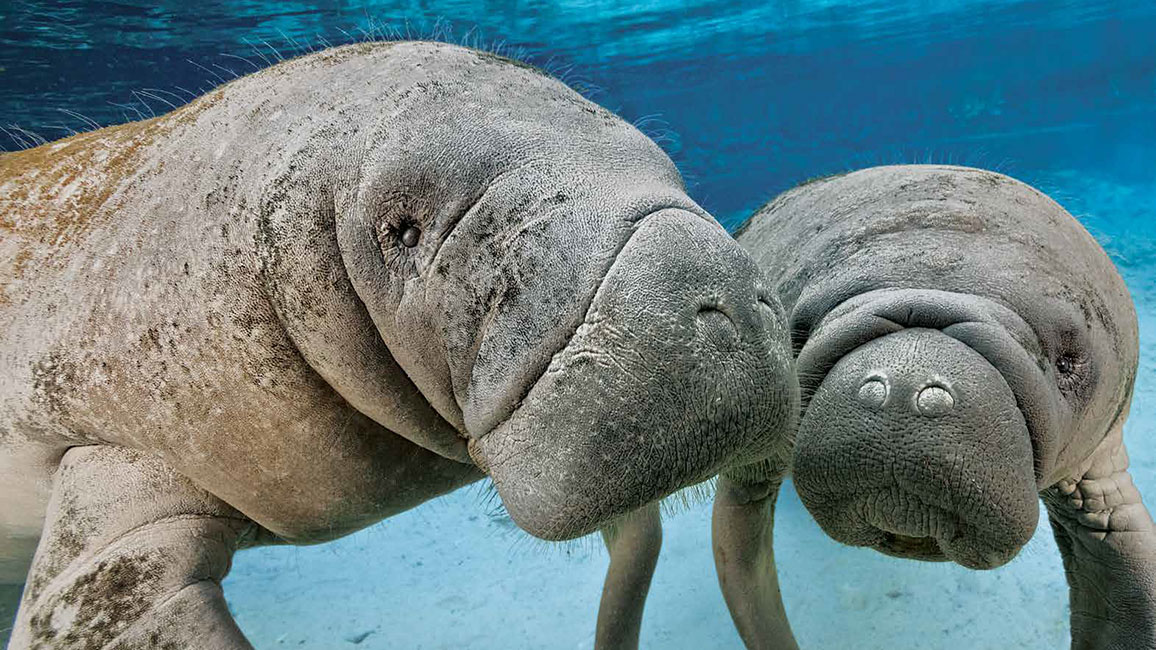There are some shocking and interesting facts about the manatee. Manatees are believed to have evolved from a wading, plant-eating animal.
“Manatee” comes from the Carab word manti, meaning “breast, udder.” The West Indian manatee is related to the West African manatee, the Amazonian manatee, the dugong, and Steller’s sea cow, which was hunted to extinction in 1768. Their closest relatives are the elephant and the hyrax (a small, gopher-sized mammal).

Image Source: https://zootampa.org/making-progress-on-the-manatee-critical-care-center/
Features of a Manatee
- West Indian manatees are large, gray aquatic mammals with bodies that taper to a flat, paddle-shaped tail.
- The manatee has a smooth brain, and the smallest brain of all mammals in relation to its body mass. This does not necessarily mean they’re stupid.
- They have two forelimbs, called flippers, with three to four nails on each flipper. The jointed bones of manatee’s flipper serve a function similar to a human hand. Their structure helps the manatee move through the water, bring food to its mouth, and hold objects. Three or four nails are found at the end of each flipper. Manatees can’t turn their heads: unlike most mammals. Instead of seven cervical vertebrae, they have six, so they must turn their whole bodies to look round.
- The average adult manatee is about 10 feet long and weighs between 800 and 1,200 pounds.
- Manatees have 2000 thick, whisker-like hairs called vibrissae on their faces, and 3000 on their bodies. These innervated follicles help the manatee sense and explore the world around it.
- Manatees are nearsighted and can see in blue, green, and gray—but not red
- Manatee vocalisations take the form of chirps, whistles and squeaks. Peak energies are in the 3-5 kilohertz range. Communication is particularly frequent between mother and calf, or when the water is turbid. Manatees speak to express various emotions such as fear, anger, pain or sexual arousal. They are also adapted to hear infrasound frequencies below 20 hertz. The manatee brain is not very convoluted, but it has an unusually high ratio of grey-to-white matter.
Scientific Classification
Manatee comes from the class “Mammalia” and family of Trichechidae. Its scientific name is Trichechus.
Species:
- Amazonian Manatee – Trichechus inunguis
- West African Manatee – Trichechus senagalensis
- West Indian Manatee – Trichechus manatus
Habitat of the Manatee
Manatees can be found in shallow, slow-moving rivers, estuaries, saltwater bays, canals and coastal areas. Manatees are a migratory species.
Reproduction

Image Source: https://www.orlandoweekly.com/Blogs/archives/2017/08/22/manatees-are-hooking-up-right-now-and-the-fwc-would-like-you-to-myob
Unlike some animal species, manatees do not form permanent pair bonds. During breeding, a single female, or cow, will be followed by a group of a dozen or more males or bulls, forming a mating herd. They appear to breed indiscriminately during this time; however, age experience of some males in the herd probably plays a role in breeding success.
Manatees have a slow reproductive rate. Twins are rare; when they do occur, one calf is suckled on each nipple, located just behind each of the flippers. More normally, one calf is born every 2-5 years. At birth, the calf is around 3-4 feet long. Guided by the mother, it swims to the surface to breathe. The new-born calf weighs about 60-70 pounds. It starts suckling – underwater – a few hours after birth.
Furthermore, the gestation period of a manatee is over a year, usually around 13 months. Mothers nurse their young for a long period. When they swim together, the baby may hold onto the mother’s back with its tiny flippers. The calf will remain dependent on its mother for up to two years. Mother and calf communicate by continual chirps and squeaks. The calf starts eating plants after a few weeks old; it is born with molar and pre-molar teeth. Female manatees are sexually mature by around 6-7 years; males by perhaps 9 years.
Diet & Feeding
Manatees eat over 60 different species of aquatic and semi-aquatic plants. Their diet includes manatee grass, turtle grass, various species of algae, mangrove leaves, and water hyacinths. They may consume 10% of their body weight daily in vegetation. Their digestive system allows the bacterial breakdown of cellulose in the hind-gut. To accommodate the great volume of high-fiber food they eat, manatees have intestines up to 150 feet long.
Manatees are completely herbivorous. They graze for food along water bottoms and on the surface. They may rest submerged at the bottom or just below the surface, coming up to breathe on the average of every three to five minutes. When manatees are using a great deal of energy, they may surface to breathe as often as every 30 seconds. When resting, manatees have been known to stay submerged for up to 20 minutes
Watch This “USGS: Magical Manatees”
Manatees in Guyana
In Guyana, manatees can be found in the National Park and the zoological park. They are found in ponds whereby visitors are allowed to feed, play with them and touch them especially children.
References
- http://mentalfloss.com/article/61457/12-things-you-might-not-have-known-about-manatees
- https://www.manatees.net/
- https://www.stabroeknews.com/2008/news/guyana/09/30/about-manatees/
- https://www.savethemanatee.org/manatees/reproduction/







